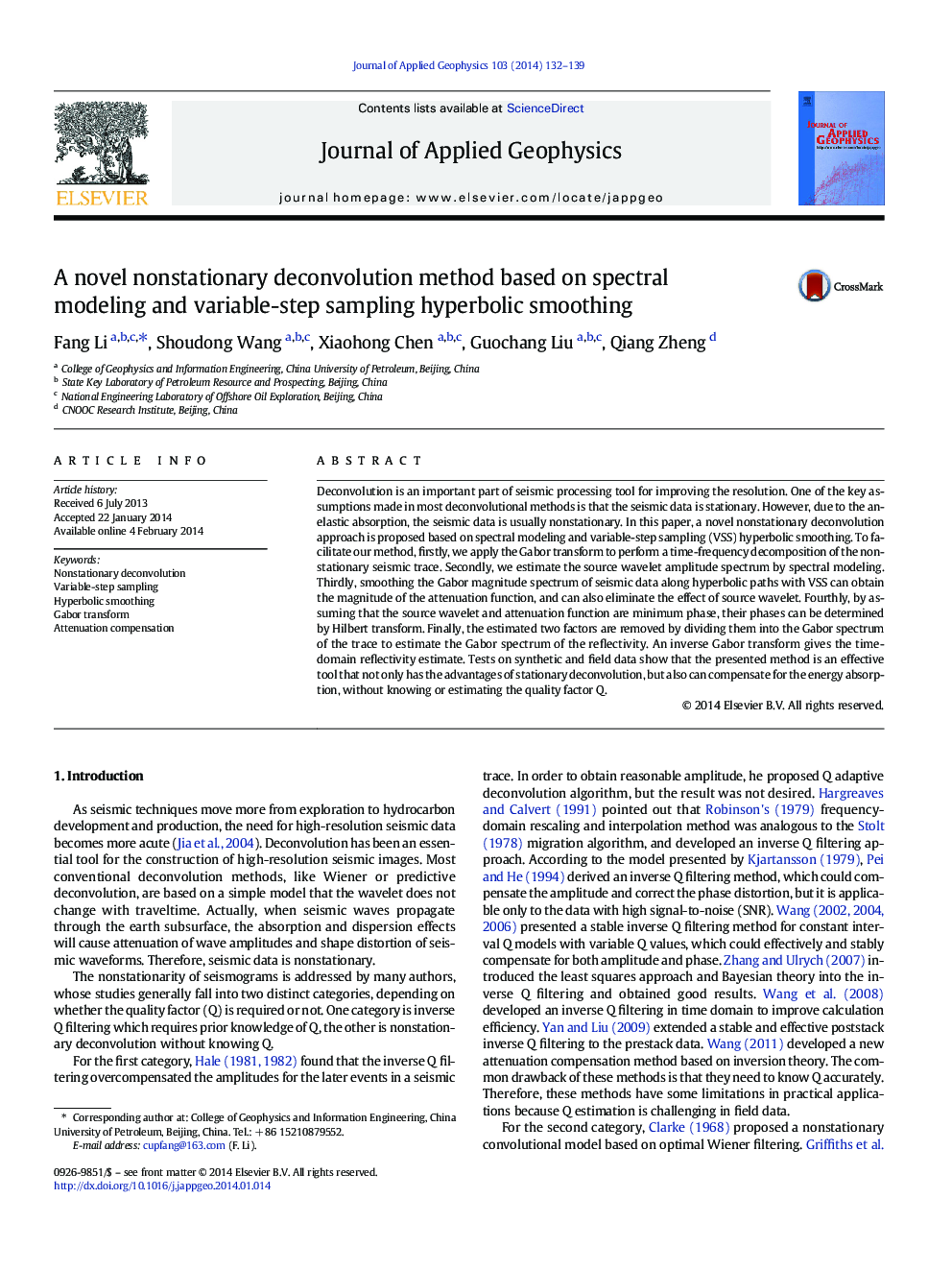| Article ID | Journal | Published Year | Pages | File Type |
|---|---|---|---|---|
| 4740302 | Journal of Applied Geophysics | 2014 | 8 Pages |
•Variable step-sampling in hyperbolic smoothing for attenuation function estimation•Estimation of source wavelet with spectral modeling•Attenuation compensation without knowing or estimating quality factor
Deconvolution is an important part of seismic processing tool for improving the resolution. One of the key assumptions made in most deconvolutional methods is that the seismic data is stationary. However, due to the anelastic absorption, the seismic data is usually nonstationary. In this paper, a novel nonstationary deconvolution approach is proposed based on spectral modeling and variable-step sampling (VSS) hyperbolic smoothing. To facilitate our method, firstly, we apply the Gabor transform to perform a time-frequency decomposition of the nonstationary seismic trace. Secondly, we estimate the source wavelet amplitude spectrum by spectral modeling. Thirdly, smoothing the Gabor magnitude spectrum of seismic data along hyperbolic paths with VSS can obtain the magnitude of the attenuation function, and can also eliminate the effect of source wavelet. Fourthly, by assuming that the source wavelet and attenuation function are minimum phase, their phases can be determined by Hilbert transform. Finally, the estimated two factors are removed by dividing them into the Gabor spectrum of the trace to estimate the Gabor spectrum of the reflectivity. An inverse Gabor transform gives the time-domain reflectivity estimate. Tests on synthetic and field data show that the presented method is an effective tool that not only has the advantages of stationary deconvolution, but also can compensate for the energy absorption, without knowing or estimating the quality factor Q.
